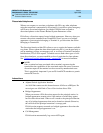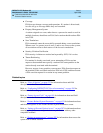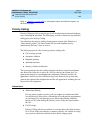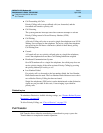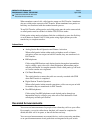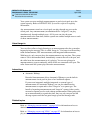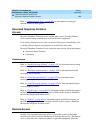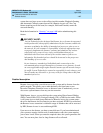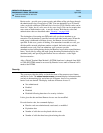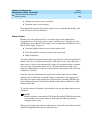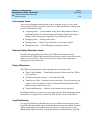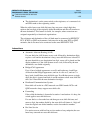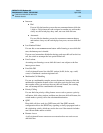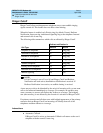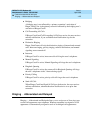
DEFINITY ECS Release 8.2
Administrator’s Guide
555-233-506
Issue 1
April 2000
Features and technical reference
1468Remote Access
20
Barrier codes provide your system security and define calling privileges through
the administered class of restriction (COR). You can administer up to 10 barrier
codes, each with a different COR and class of service (COS). Barrier codes can be
from 4 to 7 digits, but all codes must be the same length. You can also require that
users enter an authorization code to use this feature. Both barrier codes and
authorization codes are described under ‘‘
Security’’ on page 1468.
The destination of incoming non-DID trunk calls can be an attendant or an
extension. The destination is specified on each individual trunk group. When the
trunk group is dedicated to Remote Access, the Remote Access extension is
specified. In this case, you do all dialing. If an attendant is needed on a call, you
dial the public network telephone number assigned, the barrier code, and the
attendant access code. You can administer your system to provide
attendant-assisted calling during the day but Remote Access after normal business
hours. You do this by setting the trunk group Incoming Destination field to the
attendant (attd), and specifying the Remote Access extension as the Night
Service extension .
After a Digital Terminal Data Module’s (DTDM) baud rate is changed from 9600
to 1200, the DTDM cannot be accessed by Remote Access until an internal call is
made to the DTDM.
Security
The system provides the ability to check the status of the remote access feature
and barrier codes. The
status remote-access command displays information that
can help in determining why and when use of Remote Access or a particular
barrier code was denied. The display indicates if Remote Access is:
■ Not administered
■ Enabled
■ Disabled
■ Disabled following detection of a security violation
It also gives the date and time Remote Access was last modified.
For each barrier code, the command displays:
■ Date the code was administered, reactivated, or modified
■ Expiration date
■ Number of calls that can be placed with the code
■ Number of calls that have been placed using the code



